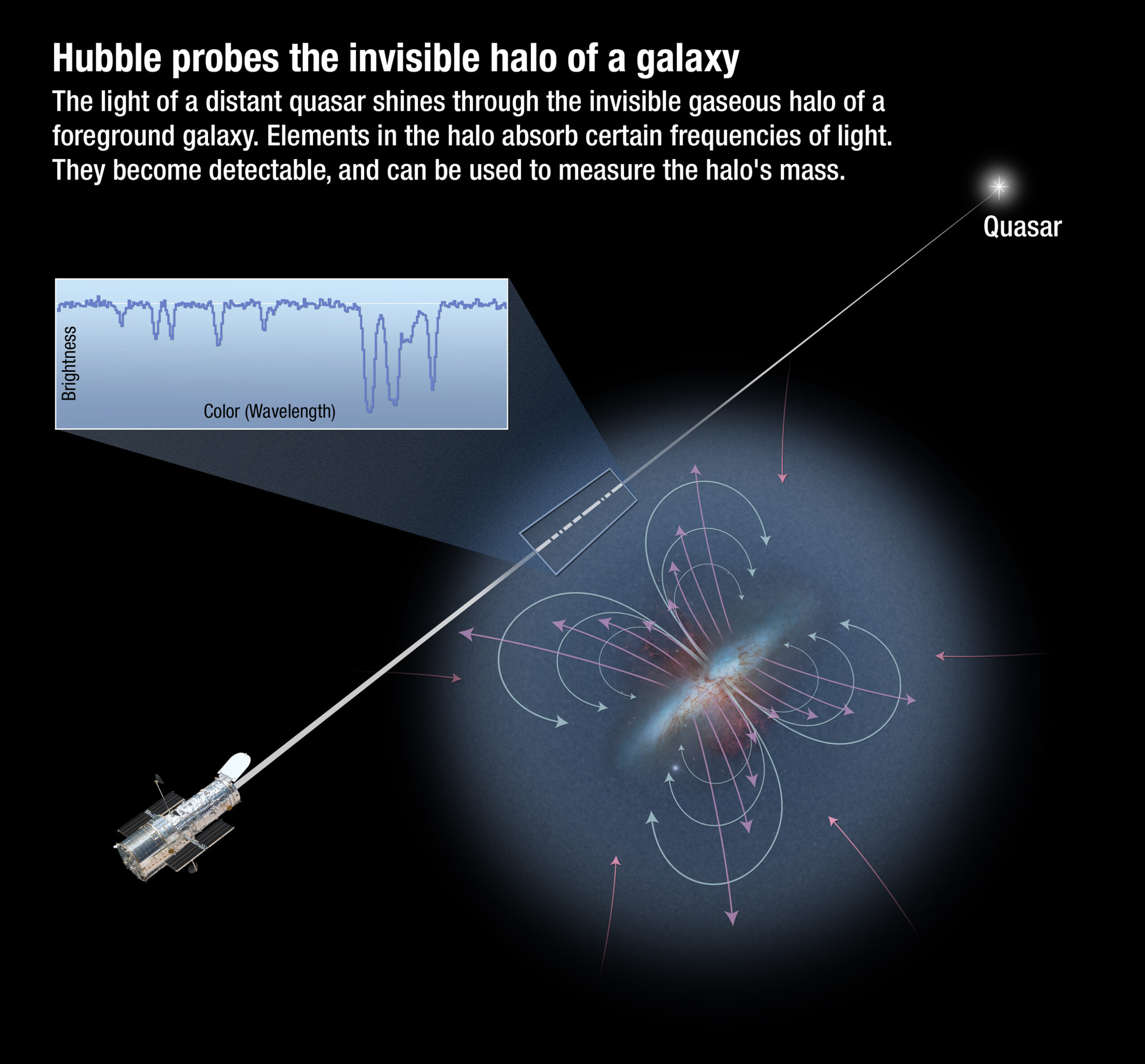Atoms forged in stars take a gigantic meandering path before they become incorporated into a future generation of stars and planets, new research reveals. This path is so indirect it takes these atoms outside the conventional definition of the galaxy. This means that some of the residue of long-lost stars passed outside the galaxy before being drawn back to become the Earth – and, ultimately, ourselves.
All elements (other than hydrogen and helium) are formed in stars – in most cases during dramatic deaths. On realizing this, astronomers thought that supernovae – and possibly more exotic events – must have occurred in our region of the galaxy to create most of the atoms that make up the Earth and other rocky planets. However, they have slowly learned that giant currents within the Milky Way and similar galaxies, known as the circumgalactic medium, swirl these products around for billions of years before the conditions are right.
“Think of the circumgalactic medium as a giant train station: It is constantly pushing material out and pulling it back in,” said the study’s lead author, University of Washington doctoral candidate Samantha Garza, in a statement. “The heavy elements that stars make get pushed out of their host galaxy and into the circumgalactic medium through their explosive supernovae deaths, where they can eventually get pulled back in and continue the cycle of star and planet formation.”
“The implications for galaxy evolution, and for the nature of the reservoir of carbon available to galaxies for forming new stars, are exciting,” added co-author Professor Jessica Werk. “The same carbon in our bodies most likely spent a significant amount of time outside of the galaxy!”
Our knowledge of this topic is still in its infancy. Although the circumgalactic medium had been theorized for a long time, its existence was only confirmed in 2011. Hydrogen is the largest component, but could have a variety of sources. On the other hand, oxygen identified there in the original discovery must have come from within the galaxy. Garza, Werk, and colleagues have now identified the presence of carbon as well, showing it follows a similar path.

Atoms in the circumgalactic medium absorb light from distant quasars, with distinctive wavelengths associated with each atom.
Image Credit: NASA/ESA/A.field
One of the competing explanations for the recently discovered Odd Radio Circles (ORCs) is that they are composed of materials flung out of galaxies by multiple supernova explosions. If so, the speeds involved mean the galaxies will likely never get them back. However, the process with the circumgalactic medium is more gentle, a slow loop that brings the atoms back for recycling.
“If you can keep the cycle going – pushing material out and pulling it back in – then theoretically you have enough fuel to keep star formation going,” Garza said. The authors suspect a disruption in the process could be the reason some galaxies appear to have stopped forming stars prematurely.
The circumgalactic medium is so diffuse that detecting the presence of elements is a challenge, some more than others. The authors collected light from nine quasars that had passed through the circumgalactic medium of 11 star-forming galaxies on its way to be intercepted by the Hubble Space Telescope. These were matched in mass and size with passive galaxies where star formation has paused or ceased.
The Cosmic Origins Spectrograph revealed abundant carbon in these galaxies’ surroundings, in the most extreme cases it was found at distances of 400,000 light years; four times the length of the Milky Way. Meanwhile, carbon detection was only a third as likely around the passive galaxies
The authors hope further observations will test their hypothesis that disruptions in carbon recycling contribute to the passive galaxies’ loss of activity.
The presence of many heavier elements in the medium has yet to be confirmed, but magnesium has previously been found to be more widespread around star-forming galaxies.
Moreover, while we need a wide variety of elements to make a human, carbon and oxygen are two of the five essential to known life. We are not merely stardust, but astonishingly well-traveled stardust.
The study is published open access in The Astrophysical Journal Letters.
Source Link: Atoms In Your Body Probably Once Left The Galaxy